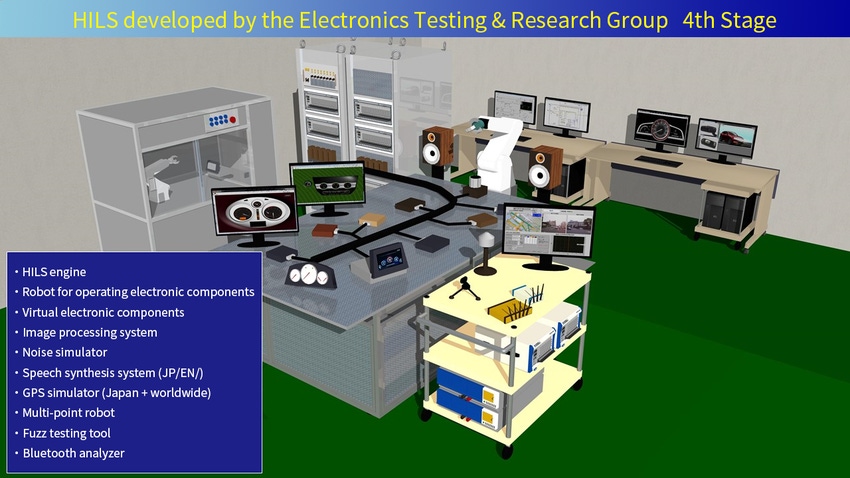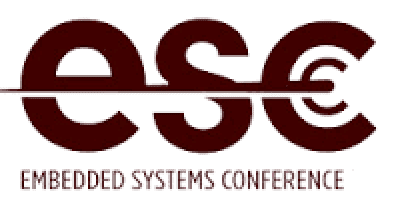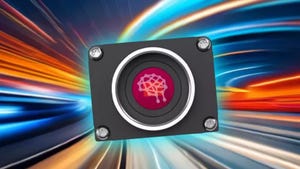Mazda’s New Test Strategy Could Save 'Hundreds of Millions of Yen' Per Year
Automated system is believed to be the first of its kind for validation test of vehicle electronics.
September 27, 2018

Taking a cue from the defense and consumer electronics industries, Mazda Motor Corp. has built an automated system for virtual validation test of vehicle electronics in body, chassis, infotainment, and safety.
The system, believed to be the first of its kind in automotive validation test, enables Mazda engineers to verify the functionality and robustness of inter-dependent vehicle technologies in an automated fashion. With it, they can use a combination of software simulations and robotic arms to mimic basic human functions, such as punching buttons and twisting knobs on an instrument panel during simulated driving. In doing so, they get a sense of how well a vehicle’s inter-dependent systems operate in countless scenarios.
|
Mazda’s validation test system includes the following: a hardware-in-the-loop engine, robot arm for punching instrument panel buttons, image processor to visually check the speedometer, speech synthesis system to issue voice commands, GPS simulator to issue mock radio signals, and a special simulator to create high electronic noise levels. (Image source: Mazda/National Instruments) |
“Mazda was able to bring a lot of technology into the validation test area to shorten the test time and truly automate the process,” noted Michi Kubo of National Instruments.
In a technical paper on the topic, Mazda engineers claimed the system will reduce man-hour testing of the subsystems by 90% and will save “hundreds of millions of yen” per year.
The test methodology is made up of a hardware-in-the-loop (HIL) system, along with a robot arm, image processor, speech synthesis system, noise simulator, and GPS simulator. It is based on National Instruments’ PXI modular instrumentation platform and developed in the LabView visual programming language.
In a test setting, it enables Mazda engineers to validate the operation of various electronic components that are exposed to the extreme types of conditions that inevitably occur in real-world driving. Such conditions include fluctuating power supply voltages, high levels of electronic noise, and application of low-quality input signals. Moreover, such conditions can be applied during the simultaneous operation of various systems, including lighting, air conditioning, powertrain, infotainment, window operation, and safety technologies.
“In order to test all those things, it has to be done in an integrated way,” Kubo said. “All the possibilities have to be tested so that you don’t have a problem with some unexpected scenario.”
In essence, the new system strives to model all the potential interactions between a human driver and a vehicle. That’s a departure from the past, when manual testing methods allowed for execution of only a limited number of testing scenarios. “Manual testing requires an enormous amount of time and labor,” Mazda engineers wrote in their technical paper. “Thus, it was critical that we develop a mechanism for automating evaluation.”
To accomplish that, they added a computer-controlled robot to push instrument panel buttons and to tap a touch panel in place of a human. They also used image processing to visually check the speedometer, a speech synthesis system to issue voice commands, and a GPS simulator to issue mock radio signals representing physical driving coordinates.
Such automated procedures are believed to be a first for automotive validation test, but not for electronics in general. Kubo said that such procedures have been used previously for validation and verification in defense and aerospace, as well as in consumer electronics. Consumer electronics applications are not as complicated as automotive, however, because there are not as many mechanical subsystems operating simultaneously.
Mazda has been working on the rollout of such a test system for nearly a decade, Kubo said. “They didn’t try to develop this gigantic system all at once,” he told us. “They laid out a product development strategy and a roadmap for all of it.”
RELATED ARTICLES:
The result is a test system that will be ready as the auto industry transitions to the electronic complexities of electric powertrains and autonomous cars, Kubo said. “The takeaway is that Mazda is treating test as an asset, much like a product,” he told us. “And that’s going to be very important going forward.”
Senior technical editor Chuck Murray has been writing about technology for 34 years. He joined Design News in 1987, and has covered electronics, automation, fluid power, and auto.
|
About the Author(s)
You May Also Like





